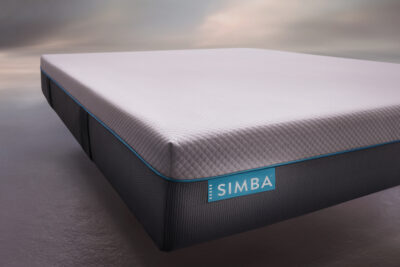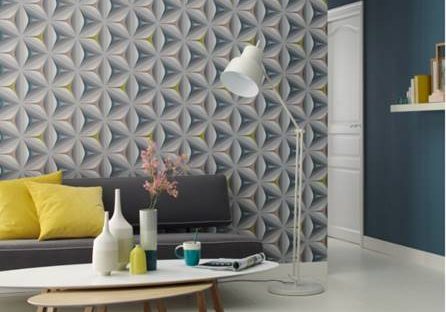
20 Top Tips for 2020: Choosing the Right Wallpaper
by Northern Life
When it comes to wallpaper, there’s a lot to consider: which wall to cover, which colours work best in different lights, which papers can be cleaned, how to prepare the walls, how to hang paper and align designs – the list goes on.
As one of the UK’s leading online suppliers of wallpaper, iwantwallpaper.co.uk has got everything homeowners need to know about walls covered!
Alex Whitecroft, Head of Design at I Want Wallpaper, shares 20 top tips for choosing the right wallpaper in 2020.
Which Walls?
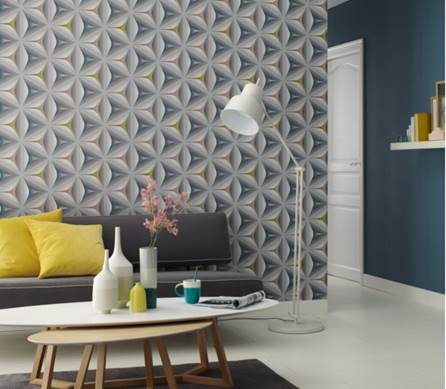
Wallpaper can transform any space, setting the tone of a room by adding design, colour and texture to walls. Don’t be restricted by the size of the room, wallpaper isn’t just for large spaces and can really bring a smaller room to life.
Although papering all walls can look fantastic and work wonders for almost any space, you don’t have to go all out; wallpaper can give a room some extra pizzazz by simply adding a feature wall. When choosing a feature wall, consider where people naturally focus their attention as they enter a room, as well as looking at the layout of furniture – a statement piece might benefit from a feature wall behind it to draw attention.
Decision on Design

There’s a wallpaper to suit every taste. Consider which designs complement the style of your house – bright geometric patterns, for example, may suit a contemporary new build, whilst a rustic farmhouse may be more suited to soft florals.
When choosing a patterned paper think about the size of the room in relation to the scale of the design. An oversized print can overpower smaller room, whereas intricate designs can get lost in larger spaces.
Wallpaper doesn’t have to be patterned, a simple, plain design will work in almost any room as a great alternative to paint (which can tend to show the dirt more easily than wallpaper by the way).
A top tip is to pin samples of the designs you’ve shortlisted on the wall or walls you’re planning to paper to see if it works for you (you can order samples via the site).
Exploring the Fifth Wall
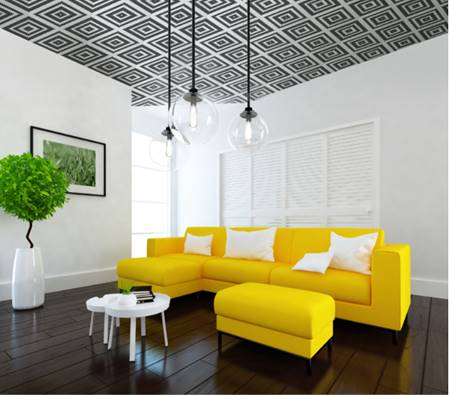
The use of patterned wallpaper on ceilings is increasingly growing in popularity – it’s a hot interior trend in 2020.
The key to choosing the perfect ceiling wallpaper is to be bold. An abstract pattern on the ceiling can transform a room from ordinary to outstanding. Be expressive with your colour choices and look at shades you wouldn’t usually go for. Whether cobalt blue, citric yellow or hot pink, bright colours shouldn’t just be reserved for the kid’s bedroom; bold shades can have a home in any room of the house – especially on the ceiling!
Mix it Up in the Kitchen
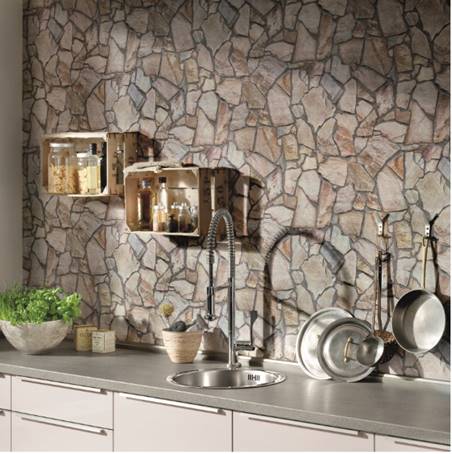
Wallpaper in kitchens can add an instant style update and give extra character to rooms that are often dominated by walls of cabinets in either wood finishes or plain prime colours such as black or white.
Although some people might think that wallpaper can’t be used in kitchen environments that are prone to humidity, cooking smells, grease and food splashes, there are hundreds of products that are ideal for kitchens. When applied correctly, modern wallpapers can stay strong for years. A top tip is to apply a coat of Decorator’s Varnish over the top to seal and make any wallpaper moisture resistant.
Make a Splash in the Bathroom
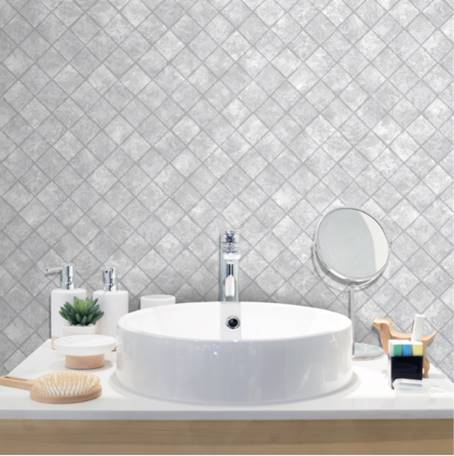
Wallpapering a bathroom makes for a great (and much cheaper) alternative to tiles. There is a wide selection of bathroom wallpapers designed specifically for use in damp and steamy conditions. Look for papers with hard-wearing vinyl finishes, wipe clean surfaces and embossed detailing for looks that will last.
Bathrooms don’t have to be boring, from linen looks to glamorous metallics and tropical jungles, there are some stunning bathroom wallpapers available.
Lining Paper
It may not be the most glamorous of papers, but lining paper is a sensible investment if you want to create the perfect canvas for your wallpaper. For best results, apply onto bare walls to cover small imperfections or hide previous colours, before papering.
Duplex
In a nutshell, duplex wallpaper is where two sheets of pressed paper have been glued, bonded, laminated, or otherwise, stuck together. Duplex wallpaper is more durable than simplex paper, which is made from only one sheet, so it’s a good choice for a longer-lasting purchase.
Embossed
Embossed wallpaper is thick and textured, with a raised surface on the design side and hollow on the reverse, so it can add depth to a wall whilst hiding a whole host of imperfections, including bumps, cracks, scratches and uneven surfaces.
Embossed papers are excellent for faux-effect designs, such as stone or brick, as the texture enhances the 3D effect.
Anaglypta
Anaglypta wallpaper is a duplex paper that is heavily embossed, meaning that it is thick with a raised textured effect – making it a good option to help even out uneven surfaces and hide imperfections. Anaglypta wallpaper is what’s also known as ‘paintable wallpaper’ so it’s a good choice if you’re looking for a textured surface to paint on.
Get Flocked
Flocking is a textile process that involves covering an adhesive-coated surface with tiny fibres. The outcome is a smooth velvety texture and an almost 3D design that stands out of the paper. Flock wallpaper is one of the oldest types of wallpaper but has seen a revival over recent years, coming back into fashion as a classic with a luxury, retro appeal.
Due to the texture of the paper, extra care should be taken when hanging flocked paper.
Metallic

Metallic wallpaper instantly injects a sophisticated sheen to interior styling. From soft shimmer through to full-on glamourous glitter, metallics will add light and vibrancy to any room. They’re also highly effective at making a room feel bigger – great for catching the summer sunlight.
Go for all-out shine on walls with the Arthouse Foil Slate Metallic Wallpaper in Silver from iwantwallpaper.co.uk, or introduce wallpapers with metallic patterns and intricate high shine detail, such as Holden Décor Shimmering Feather Metallic Wallpaper in Rose Gold Pink.
Non-woven
Non-woven wallpapers are set to be a big trend in 2020, partly due to environmental friendliness credentials and partly because the blend of natural and artificial fibres used in production conveniently makes the paper washable and breathable.
Non-woven wallpaper is excellent for kitchens and bathroom as the lack of vapour-lock prevents mould and mildew from growing in places that are likely to fill with steam and heat. The paper is also tear-resistant, non-expandable/contractible, easy to put up and equally as simple to remove.
Play with Vinyl
Vinyl paper is made up of a backing layer, which features the wallpaper design, and a plastic topcoat, making it easy to install, clean and remove. The paper is incredibly durable and light-resistant, meaning it can hang anywhere in the home and will hold for more than ten years. As an all-round user-friendly option, available in a huge range of designs, vinyl is one of the more popular wallpaper choices for many homeowners.
Try Before You Buy
As you would with paint, it’s a good idea to sample wallpaper options before purchasing a whole roll. Test wallpaper samples on the walls you’re looking to decorate, to get a feel for the texture and colour in the natural light. I Want Wallpaper (iwantwallpaper.co.uk) offers samples of their wallpapers, which can be delivered nationally for a small fee.
Colour Fastness
All good wallpapers are assigned a ‘colour fastness’ rating symbol to show the paper’s resistance to light. It’s worth giving some thought about how much exposure to daylight paper will receive, before selecting an option. Although a satisfactory rating is adequate for may rooms, walls which are consistently exposed to light may require a higher rating to guarantee longevity.
Wipeable Wallpaper

Like all household items, wallpaper can get dusty or dirty and may require a quick clean from time-to-time. Most wallpapers come with a ‘washability’ rating, which goes from ‘spongeable’ to ‘highly scrubbable’. Although most marks are easily wiped, it’s essential to check the rating before attempting to clean any blemishes.
Wipeable or high quality, durable paper is advisable for high traffic areas in the home, such as the stairs and hallway, or any rooms where small children are likely to be touching surfaces. Strong colours and patterns can also hide any scuffs or finger marks better than a plain painted wall that can soon need a repaint.
Consider Your Canvas
Ahead of getting stuck in to decorating, it’s important to investigate what lies beneath. Use a scraper to test how many layers of paper there are under the surface wall covering. If there are more than two layers, then it’s important to allow extra time to remove any unwanted wall coverings.
It can take hours and lots of elbow-grease to remove wallpaper with the old-fashioned ‘score, soak, steam, and scrape’ method. I Want Wallpaper have a secret weapon in the fight to eliminate stubborn wallpaper – fabric softener. Mix equal parts of softener and hot water in a spray bottle, spray a section of wallpaper so that it is fully saturated then wait approximately 15 minutes (this is very important and allows the solution to work its magic), then peel away paper and use a paint scraper on the more stubborn areas.
Once you’ve filled in any holes or cracks and sanded the surface, ‘size’ the wall by covering it in a mixture of half PVA glue and half water applied with a paint roller – it’s not essential but this will create a slightly glossy finish to the wall and make it easier to slide paper into position and help it stick.
Picking Your Paste
When shopping for wallpaper, it’s important to look at the way in which the paper will stick to your wall. Generally, there are three different wallpaper applications: pre-pasted, paste the wall and paste the wallpaper.
Pre-pasted paper is coated in a pre-applied paste, which just needs to be moistened to activate, before hanging (if you’re looking for as little hassle as possible, this is probably the option for you). Paste the wall application requires you to brush paste onto the wall before application. Paste the wallpaper application, refers to the more traditional method of applying paste to the back of the paper, using a pasting table.
It’s a Match
Another consideration when shopping for wallpaper is to look at the ‘match type’ i.e. the way in which the design matches up when hanging different strips of wallpaper. Different match types will require different amount of preparation and some will require additional roles of paper.
Free match wallpapers have a design which is not intended to match when hanging, straight match wallpaper must be matched at the same height each time and offset match offsets the pattern on each strip by half the pattern’s height each time.
Strippable, peelable, remove wet
Most modern wallpapers will last for years, with many options holding over a decade. When eventually the time does come to remove or replace wallpaper, it’s good to know the removal method. ‘Strippable’ wallpaper can be removed dry by pulling it away from the wall, ‘peelable’ paper allows the upper layer to be removed whilst leaving the underlayer as a lining and ‘remove wet’ paper needs to be soaked and scraped or steamed to be removed.
For more advice and inspiration from one of the UK’s leading online wallpaper suppliers visit iwantwallpaper.co.uk




